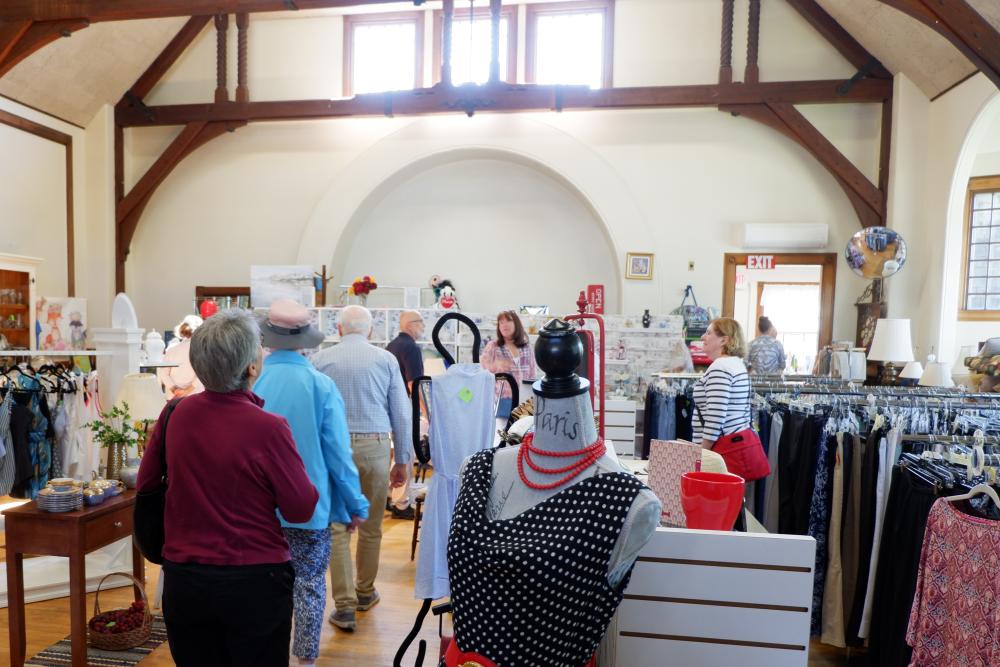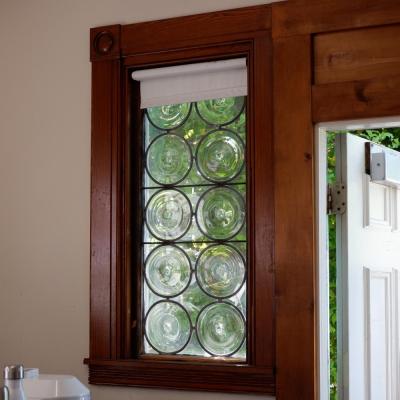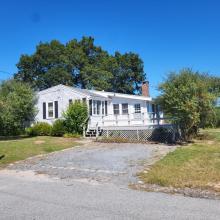Marion church delves into its past with tour, presentation

MARION — The bell of the First Congregational Church of Marion rang several times Saturday morning.
The rings weren’t to signal a new hour or a call to worship. The repeated, irregular tolls of the bell were, in a sense, the sounds of history.
In collaboration with the Sippican Historical Society, the church held a tour and presentation June 8 that delved into its past, as attendees visited the sanctuary and the nearby building that now serves as Penny Pinchers Exchange.
And, participants had an opportunity to pull the rope that rings the bell of the church. Displayed nearby was an 8-inch piece of the very bell, part of a collection of artifacts.
“We love our history, and we love sharing our history,” Rev. Eric Osterday said.
Osterday led a tour through the Penny Pinchers Exchange thrift store, a structure once used for Sunday school and social gatherings.
The 1885 building stood on land purchased by Elizabeth Taber from Tabor Academy’s first headmaster Clark Howland, according to Osterday.
The chapel’s architect, William Gibbons Preston, wanted the building to blend into the town culture of Marion while still being used for ecclesiastical purposes. He utilized circles, squares and groups of three in the “very trinitarian design,” Osterday said.
Trios of windows, arches, and bullseye glass of circles inside squares within the building make Preston’s design vision clear still today.
Preston’s design also juxtaposed smooth and sharp elements. The stones of the chapel’s foundation contrast the sharper shingles above, and the corners of the building’s tower rounding out at the top into a “candle snuffer” shape, according to Osterday.
“All part of his flow and design,” Osterday said.
Will Tifft, president of the Sippican Historical Society, portrayed the history of the church, which first formed in 1703 by meeting in a “little wood cabin,” more than a century before it would come to the sanctuary on 28 Main St.
Somehow, 35 people fit inside the 12-by-16-foot structure that had just one door and one window, according to Tifft.
The cabin was built near an open-air pulpit used in the 17th century called “Minister’s Rock,” on what had previously been a meeting area of the Wampanoag. It existed on a piece of land given to the settler Samuel Briggs and is located on present day Oakdale Avenue.
In the early 19th century, the church met in a building constructed by the Nye family, what today is the Marion General Store, according to Tifft.
In 1841, the “captain’s church” was built, at a time when Marion, after having transitioned from a simple fishing and farming community to a commercial shipping coastal town, had become affluent.
“The feeling was we needed a church that represented what our town has become,” Tifft said.
Ten sea captains pooled $1,000 each — about $350,000 today, according to Tifft — to build the structure, which has been the First Congregational Church of Marion for 183 years since.
In 1872, plans were made to install clocks in the church’s tower. To raise money, the church solicited funds from the “heavy hitters in town,” Tifft said.
One of those individuals, who lived to the south of the church, declined to donate. His neighbor agreed to contribute so long as the tower’s south side was left blank, according to Tifft.
Still today, the tower of the First Congregational Church of Marion has just three clock faces. The side looking south is blank.















